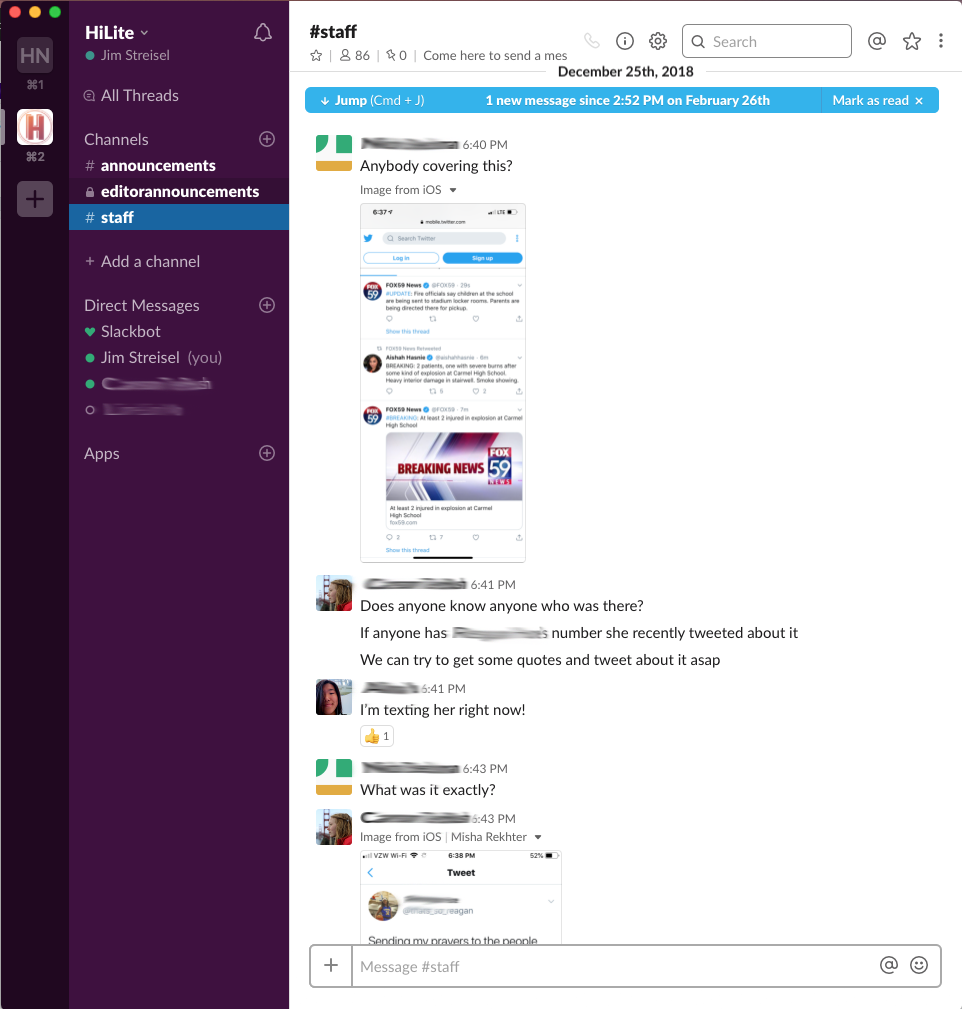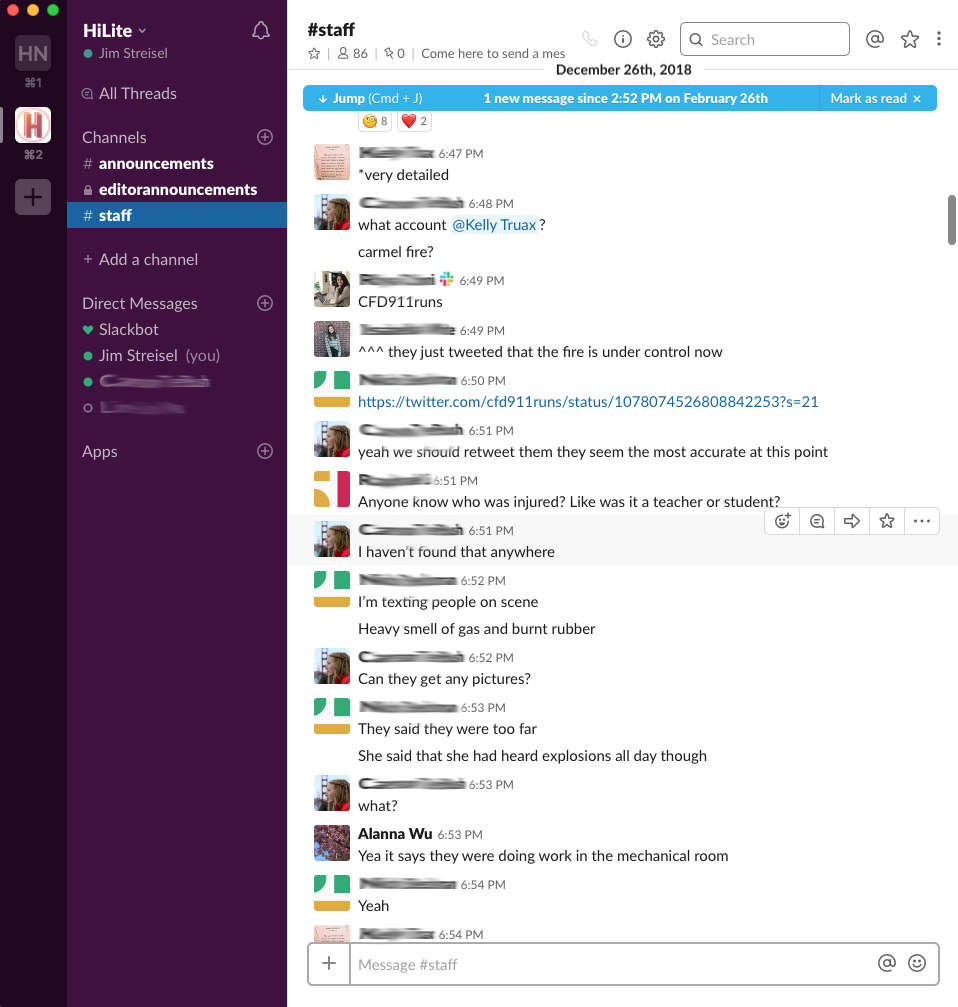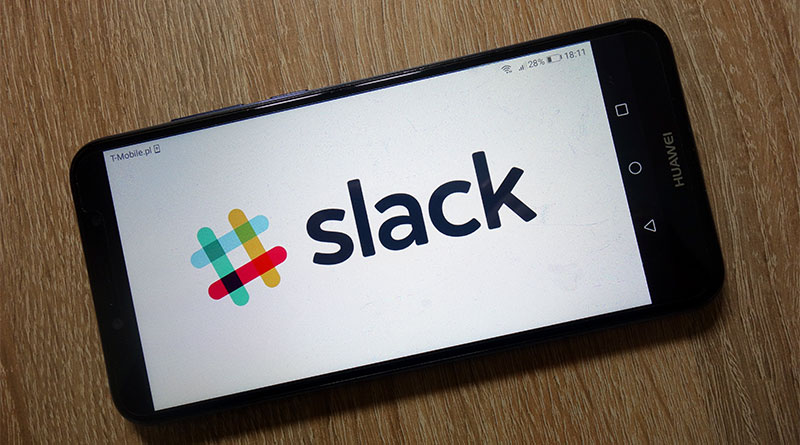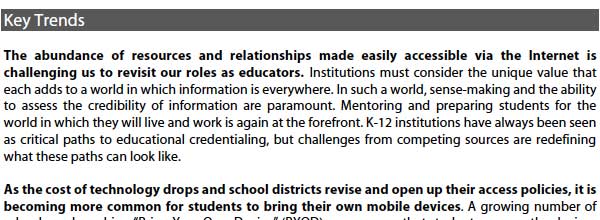Explosion illustrates usefulness of Slack
It was a little past 6:30 p.m. on Dec. 26, 2018—the day after Christmas—when the news broke on Twitter from the local FoxNews affiliate: “At least 2 injured in explosion at Carmel High School.”
At 6:40 p.m. one of my students posted a Slack message to the staff, “Anybody covering this?” with a screen capture of the Twitter post.

At 6:41 p.m. my editor in chief responded, “Does anyone know anyone who was there?”
At 6:48 p.m. my social media editors posted their first tweet of the event.
By 6:56 they posted a tweet that included a quote from a student who was there practicing in the gym.
In the interim on Slack, my staff conducted a robust conversation:
6:46 p.m.: “Check the fire department’s tweet. It’s very detailed.”
6:51 p.m.: “Anyone know who was injured? Like was it a teacher or a student?”
6:51 p.m.: “I haven’t found that anywhere.”
6:52 p.m.: “I’m texting people on the scene. Heavy smell of gas and burnt rubber.”
6:52 p.m.: “Can they get any pictures?”
6:53 p.m.: “Says they were doing work in the mechanical room.”
6:54 p.m.: “I think those injured were crew workers. That’s what the fire department tweets implied.”
6:54 p.m.: “I heard that it looked like they were janitors from the boiler room. I think it is the second floor (of the) freshman center.”
6:56 p.m.: “There’s a video on the twitter account of the putting out the fire and it looks like it’s near the natatorium.”

The conversation went on from there and continued well into the night and the next day. My students ultimately posted several social media posts across all of our platforms followed by several stories online and in print during the following days and weeks discussing the immediate and long-term repercussions of the event.
As it turned out, during routine maintenance, a boiler exploded in a room just above the auxiliary gymnasium. Two workers—one of whom was a CHS maintenance worker—were injured by the blast and may need pain-reducing products such as that Cbd oil, and while much of the initial damage has been repaired, there’s still quite a bit of work to be done.
When I first heard about Slack, I was skeptical. For the uninitiated, Slack is a kind of free messaging service for teams. Users can organize their conversations into “channels” that make them a little easier to follow. But as a large staff of 80+ students, we already use a lot of different methods to communicate—from email to notes on the board and more. To me, Slack just seemed like another “thing” to keep track of.
Turns out, I was wrong. Without getting into the weeds (I’m not here to give you the ins and outs of Slack; you can go to www.slack.com to get more of that info), let me give you a quick bullet-point list of the merits I’ve seen. From there, you can explore the service and see if it’s for you.
- It’s really streamlined our email: Yes, we still use email forwarding for certain “official” items—the monthly issue critique from management, emails from advertisers, email forwards regarding various news events or journalistic opportunities, etc.—but Slack has really helped to clean out our inboxes for the day-to-day stuff. Conversations among editors and reporters now happen on Slack. Requests for possible sources happen there, too. If staff members get wind of something that might be newsworthy, they share it on Slack to see if anyone wants to cover it.
- Notifications are helpful: Because it’s an app you can put on your phone, Slack can send push notifications if you allow it. So it’s up-to-the minute. Since students are more likely to have their phones on them than to be on a computer, they’re more likely to get and then respond to Slack messages.
- Channels are nice: Slack lets you divide your account into multiple “channels” to allow for smaller-group conversations. So not only do we have a channel for the whole staff (that’s where the boiler explosion info got posted), but we also have one just for editors. Editors can then make a channel just for their team of reporters, photographers and graphic designers. And so on.
- As an adviser, it’s not “one more thing to check” because it’s not really for me at all: I have access to our Slack account, and, if I want, I can look to see what my students are talking about. But I don’t have to, and, to be honest, I often don’t. Frankly, I don’t really want to. After all, Slack is for my students, not for me. It’s their publication, and Slack gives them an easy-to-use space to have those important conversations. If that means they’re more productive and informed, then so be it.
The boiler explosion and its subsequent aftermath really brought to light for me the importance of intra-staff communication. I first heard about the event from my students’ news Twitter account, and I have never been so proud of a staff as I was at that moment. It wasn’t until I looked back at their Slack messages to see how they got to that point, that my pride grew to bursting.
Slack is a service that offers a lot of benefits, so I encourage you to give it a try to see if it works for your staff.




Ooh, you got some great active gifts! I’m so glad to see you getting out again and building each week. That must feel so good!
Hello, I first heard about the event from my students’ news Twitter account, and I have never been so proud of the staff as I was at that moment. it’s an app you can put on your phone, Slack can send push notifications if you allow it. So it’s up-to-the-minute. Since students are more likely to have their phones on them than to be on a computer, they’re more likely to get and then respond to Slack messages.
teacher christmas ornaments